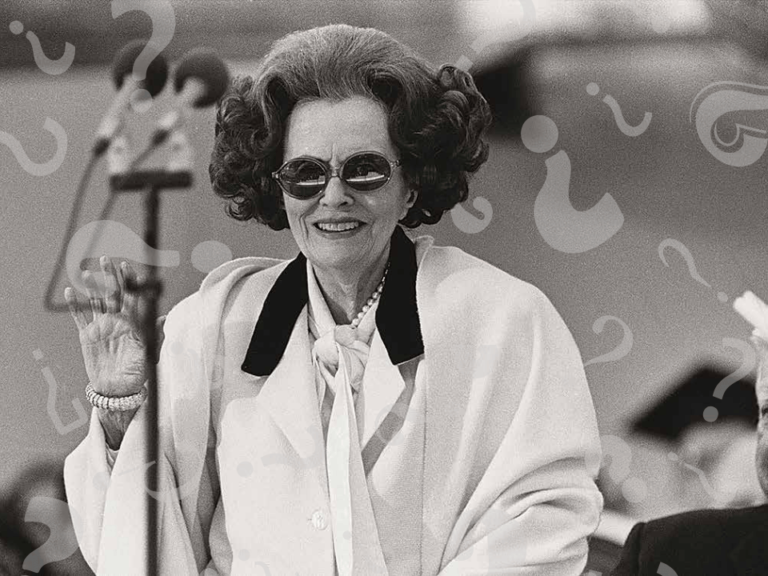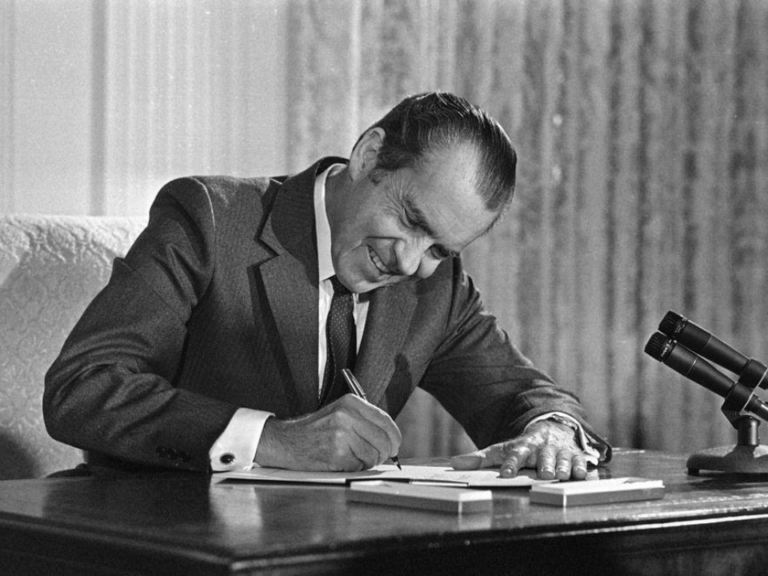

- Podcast: Judith L. Pearson’s “Crusade to Heal America” explores how Mary Lasker made the National Cancer Act happen
By The Cancer History Project | Sept. 22, 2023
“Crusade to Heal America: The Remarkable Life of Mary Lasker” By Judith L. Pearson | Mayo Clinic Press | $27.99
Mary Lasker was surprised when, in 1964, President Lyndon B. Johnson called her at home and asked whether she would accept the job of U.S. ambassador to Finland.
“She’s shocked. Finland abuts Russia. There was no way she wanted to go to Russia. We were at the height of the Cold War. This was not on her list of things to do,” Judith L. Pearson, author of “Crusade to Heal America: The Remarkable Life of Mary Lasker,” and founder of A 2nd Act, said to The Cancer Letter.
“I want to get the answer to the different kinds of cancer there are,” Lasker told Johnson.
In their next phone call, when Lasker declined Johnson’s repeated offer to become an ambassador to Finland, she made an appointment to meet with the president at the White House to pitch a different plan: creating a commission on heart disease, cancer, and stroke.
“She wasn’t afraid or standoffish to walk up to a man, even a man in tremendous power, and just launch into a conversation, join a conversation, turn the conversation,” Pearson said. “She was very comfortable and adept at doing that.”
Pearson’s book, “Crusade to Heal America: The Remarkable Life of Mary Lasker,” was published Sept. 19. The book tells the story of Mary Lasker’s quest to cure cancer.
An excerpt from the book appears on the Cancer History Project.
Unabashedly using her immense wealth, social connections, and PR acumen, Mary Lasker spearheaded the passage of the National Cancer Act, which President Richard Nixon signed into law in 1971.
“She wanted to light the fire and then wanted everybody else to go to work to make it happen,” Pearson said. “She would give them whatever resources were necessary, including some of her own money, to make sure that the right congressmen and senators held positions got reelected, or got elected, and then went into the appropriate committees.”
The moon landing in 1969 inspired Lasker.
“That got Mary to thinking about how that success came together,” Pearson said. “It was a government agency that was solely responsible for aeronautics. It was NASA. They weren’t part of the Air Force. They weren’t part of anything. They were their own thing.”
How do you create a NASA-like organization for cancer research?
“She started thinking that the important thing in cancer research was to have a group of researchers whose sole responsibility was researching cancer,” Pearson said. “While we had the National Cancer Institute, it didn’t seem that they were doing that.”
Lasker believed bipartisanship would help her create her cancer moonshot.
“Cancer doesn’t care whether you’re a Republican or Democrat, rich or poor, young or old, famous or not. If you’re going to get cancer, you’re going to get cancer,” Pearson said. “She used that strategy with all of her lobbying.”
Lasker considered herself to be a “catalytic agent” who worked behind the scenes through proxies to accomplish the goal of curing cancer. Before the National Cancer Act was signed, she met with a prominent New Yorker, Elmer Bobst, whom Nixon considered a second father.
“Bobst was instrumental in the entire quest for a cure for cancer—her entire crusade,” Pearson said. “When Mary mentioned her interest in curing cancer, Nixon said, ‘Oh yeah, Elmer mentioned that to me too. I had a birthday party for him last month, and he mentioned that to me too.’”
Lasker hosted dinner parties to advance the cause. At each table, she would seat a politician, a celebrity, a journalist, and a scientist.
“The politician was interested in the celebrity. The celebrity was interested in the journalist writing something glowing on the front page about him or her. The scientist wanted the politician’s interest to fund whatever research they were working on,” Pearson said. “She repeated that over decades, and it never failed in getting the right people together.”
Lasker instructed the scientists: “OK, these people don’t know anything about what you’re doing. Just tell them how you’re going to cure cancer.”
The passing of the National Cancer Act in 1971 revolutionized the landscape of funding for cancer research. It also wasn’t exactly what Lasker wanted.
“It wasn’t necessarily her way or the highway, but a little bit it was,” Pearson said.
Rather than act as its own organization, NCI remained a part of NIH.
“The National Cancer Act saw to it that the National Cancer Institute stayed within NIH, but that the director reported directly to the president, and that there was a council that had to be made up of at least a third laypeople,” Pearson said. “It couldn’t be all scientists and doctors because the lay people bring a different vision to everything she made.”
After the visionary bill was signed into law, money and ideas followed.
“At the end of the day, it’s the money that’s going to carry this thing over the goal line,” Pearson said. “It wasn’t exactly as she had hoped, but boy, the things that did happen really fast-tracked the research that went on afterwards.”
Pearson spoke with Alexandria Carolan, associate editor with the Cancer History Project.
This column features the latest posts to the Cancer History Project by our growing list of contributors.
The Cancer History Project is a free, web-based, collaborative resource intended to mark the 50th anniversary of the National Cancer Act and designed to continue in perpetuity. The objective is to assemble a robust collection of historical documents and make them freely available.
Access to the Cancer History Project is open to the public at CancerHistoryProject.com. You can also follow us on Twitter at @CancerHistProj, or follow our podcast.
Is your institution a contributor to the Cancer History Project? Eligible institutions include cancer centers, advocacy groups, professional societies, pharmaceutical companies, and key organizations in oncology.
To apply to become a contributor, please contact admin@cancerhistoryproject.com.













